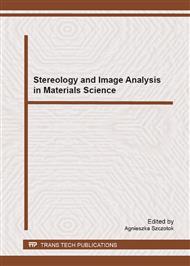[1]
A.A. Edidin, C.M. Rimnac, S.M. Kurtz, Mechanical behaviour, wear surface morphology and clinical performance of UHMWPE acetabular components after 10 years of implantation, Wear 250 (2005) 152-158.
DOI: 10.1016/s0043-1648(01)00616-0
Google Scholar
[2]
A. Buford, T. Goswami, Review of wear mechanisms in hip implants: Paper I - General, Mat. Des. 25 (2004) 385-393.
DOI: 10.1016/j.matdes.2003.11.010
Google Scholar
[3]
G. Lewis, Properties of crosslinked ultra-high-molecular-weight polyethylene, Biomaterials 22 (2001) 371-401.
DOI: 10.1016/s0142-9612(00)00195-2
Google Scholar
[4]
A. A. Edidin, L. Pruitt, Ch. W. Jewett, D. J. Crane, D. Roberts, S. M. Kurtz, Plasticity-induced damage layer is a precursor to wear in radiation-cross-linked UHMWPE acetabular components for total hip replacement, J. Arthroplasty 14 (1999).
DOI: 10.1016/s0883-5403(99)90086-4
Google Scholar
[5]
M. C. Sobieraj, S. M. Kurtz, C. M. Rimnac, Large deformation compression induced crystallinity degradation of conventional and highly crosslinked UHMWPEs, Biomaterials 26 (2005) 6430-6439.
DOI: 10.1016/j.biomaterials.2005.04.008
Google Scholar
[6]
Z. Bartczak., M. Kozanecki, Influence of molecular parameters on high-strain deformation of polyethylene in the plane-strain compression. Part I. Stress-strain behavior, Polymer 46 (2005) 8210-8221.
DOI: 10.1016/j.polymer.2005.06.100
Google Scholar
[7]
Z. Bartczak, E. Lezak, Evolution of lamellar orientation and crystalline texture of various polyethylenes and ethylene-based copolymers in plane-strain compression, Polymer 46 (2005) 6050-6063.
DOI: 10.1016/j.polymer.2005.04.092
Google Scholar
[8]
B. Wunderlich, G. Czornyj, A study of equilibrium melting of polyethylene, Macromolecules 10 (1977) 906-913.
DOI: 10.1021/ma60059a006
Google Scholar
[9]
J. Cybo, J. Maszybrocka, P. Duda, Z. Bartczak, A. Barylski, S. Kaptacz, Properties of ultrahigh-molecular-weight polyethylene with a structure modified by plastic deformation and electronbeam irradiation, J. Appl. Polym. Sci. 125 (2012) 4197-4208.
DOI: 10.1002/app.36572
Google Scholar
[10]
Z. Bartczak, R.E. Cohen, A.S. Argon, Evolution of the crystalline texture of high-density polyethylene during uniaxial compression, Macromolecules 25 (1992) 4692-4704.
DOI: 10.1021/ma00044a034
Google Scholar


